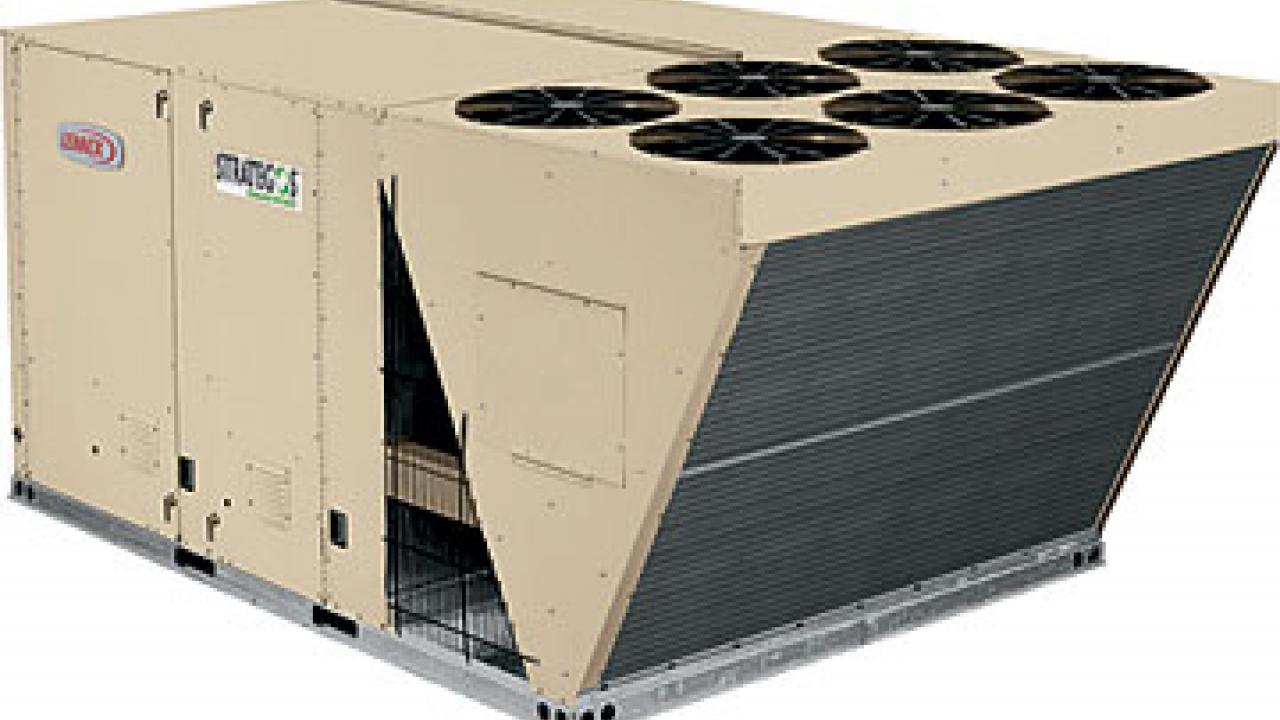UC Davis energy-efficiency experts today are launching a novel program designed to slash electricity use by rooftop air conditioners in the western United States by more than 40 percent.
The "Western Cooling Challenge," sponsored by the UC Davis Western Cooling Efficiency Center, will be introduced at a Denver meeting of energy-conscious retail business leaders. The meeting is the first Retailer Energy Alliance Supplier Summit and is hosted by the U.S. Department of Energy.
The challenge aims to accelerate the adoption of regionally appropriate cooling technologies for new and existing low-rise, nonresidential buildings (such as suburban retail and office buildings).
"Many western states are hot and dry but use cooling systems that were designed for warm and humid climates," said Dick Bourne, associate director of the UC Davis Western Cooling Efficiency Center. "With technologies specifically designed for the West, we can dramatically reduce the energy used to cool our buildings."
Bourne, who will describe the program in a 4 p.m. talk at the meeting, added that changing the cooling industry to pursue regional solutions is a challenge that will require partnering among many stakeholders.
"The UC Davis Western Cooling Efficiency Center is stepping forward to organize this partnership," he said. "Succeeding with this challenge offers major rewards for all parties: utilities, manufacturers, building owners and the general public."
The Western Cooling Challenge is a program of activities designed to help cooling-unit manufacturers deliver better products, and help building owners install and use those products.
The challenge includes voluntary, more demanding performance specifications for new rooftop cooling units; consultations with UC Davis experts for designers trying to meet those specifications; and a new certification of "Western Cooling Challenge compliant" to help building owners identify the new units in the marketplace.
Overall, the UC Davis Western Cooling Efficiency Center has long-term goals of substantially reducing the energy used for cooling in the west. The goals have a target date of 2030 and apply to the 11 large western states with predominantly dry summer climates –- California, Arizona, Nevada, Utah, Colorado, Oregon, Washington, Idaho, Montana, Wyoming and New Mexico.
The Western Cooling Challenge supports the Western Cooling Efficiency Center’s two-pronged goals aimed at total energy use and peak-demand energy use (typically, mid-afternoon on summer days). Both goals use 2007 energy use as the baseline.
- Total energy use: The Western Cooling Efficiency Center goal is to reduce cooling energy use in all new buildings by half, and in existing buildings by one-quarter.
- Peak-demand energy use: The Western Cooling Efficiency Center goal is to eliminate (in combination with renewable electricity sources) the peak electricity demand for cooling in all new buildings, and to reduce peak electricity demand for cooling in existing buildings by half.
"With the Western Cooling Challenge, and its goal of reducing both energy use and peak demand from cooling by more than 40 percent, we are targeting a large market sector: the rooftop air conditioners that cool 70 percent of the floor area in non-residential buildings in the western U.S.,†said Bourne. “These units are not optimized for dry climates, so there is a significant opportunity here to reduce electricity use and demand."
The Western Cooling Challenge has a fast-track timeline and a high-profile list of collaborators in every key industry sector.
The timeline:
- June 5 (today): Launch the challenge at the Retailer Energy Alliance Supplier Summit.
- July 5: Deadline for interested parties to submit questions and comments to Western Cooling Efficiency Center.
- July 18: Center to hold webcast to respond to questions and comments.
- Aug. 15: Deadline for interested parties to submit letters of intent to participate in Western Cooling Challenge.
- Summer 2009: First field testing of Western Cooling Challenge entries.
- Spring 2010: First state-of-the-art new equipment developed in Western Cooling Challenge reaches the marketplace.
The collaborators and their roles:
- Cooling system manufacturers will invest in developing new technologies and bringing them into production. (Partners already affiliated with the Western Cooling Efficiency Center include large industry leaders Trane, Lennox and Munters, as well as smaller firms with innovative technologies.)
- Building owners and operators will provide a market for technologies developed for the Western Cooling Challenge. (Partners already affiliated with the Western Cooling Efficiency Center include industry leaders Wal-Mart and Target. The center also works closely with the California Department of General Services, which manages many state buildings in California.)
- Electric utilities offer financial incentives to building owners and operators who adopt efficiency technologies. (Energy partners who have already committed to providing incentives for Western Cooling Challenge technologies include industry leaders Southern California Edison, the Pacific Gas & Electric Co., and the Sacramento Municipal Utility District.)
- Energy regulators approve energy-efficiency programs proposed by utilities. (The California Public Utilities Commission has already set public energy-savings targets through their "Big Bold Initiative." The Western Cooling Efficiency Center has incorporated the Big Bold Initiative into the Western Cooling Challenge goals.)
- Universities and other public institutions provide unbiased technical support. (Partners who have already committed to supporting the Western Cooling Challenge include the U.S. Department of Energy, the National Renewable Energy Laboratory, and the California Energy Commission, as well as the UC Davis Western Cooling Efficiency Center, the challenge facilitator.)
- Other nonprofit organizations that focus on energy efficiency. (Those that have committed to supporting the Western Cooling Challenge include the American Council for an Energy-Efficient Economy; the Southwest Energy Efficiency Project; the Northwest Energy Efficiency Alliance; the Retailer Energy Alliance; the Natural Resources Defense Council; and the New Buildings Institute.)
Media Resources
Mark Modera, Western Cooling Efficiency Center, (530) 754-7671, mpmodera@ucdavis.edu
